- Resistance Training
PERIODIZATION PROGRAMMING FOR STRENGTH & PERFORMANCE!
- By captdavid1
- On January 22, 2020
Here are the 7 phases each periodization model should have in order to reach the pinnacle of true strength and performance.
- 1) Anatomical Adaptation (work capacity): building a foundation of strength, joint integrity, and the biomechanics needed to withstand imposed demands.
- 2) Hypertrophy: the building of cross sectional area in the muscle. Intermuscular coordination through intensities of 70%-80% 1rm.
- 3) Maximizing strength: intramuscular coordination response by lifting loads higher than 85% 1rm.
- 4) Conversion: the ability to transfer modalities and acquired stimuluses into better performance.
- 5) Maintenance: deloading volume and intensity while moving towards full recovery.
- 6) Cessation: the end of the mesocycle transferring into the next phase.
- 7) Compensation: lending a new wave of improved performance through adaptation from prior training.
When developing a strength program you must coordinate muscular and neurological adaptations to impose progression. Each phase must potentiate the next helping to achieve the end goal at the climax of the macrocycle. Through these 7 phases you can implement proper volume, intensity, frequency, and exercise selection to enhance the overall performance and strength gains. Using predetermined deloads and autoregulation to minimize over training and maximize progression. And utilizing minimal effective volume in the beginning of the training cycle while working towards finding maximal recoverable volume to enhance the ability to train consistently with maximal effectiveness. Utilizing Rate of Perceived Exertion (RPE) Reps In Reserve (RIR) and Velocity Based Training (VBT) are good methods to autoregulate training to keep you from hitting a wall. By calculating your daily 1rm this will allow you to keep working towards the overall goal but maintaining total work capacity depicted on how your body is responding that day. With every training program just like in life there must sub goals in the pursuit to achieving the overall goal. With proper planning and scheduled practice to keep the progress on an incline each and every week. Utilize these guidelines to assist you in your training program.
Here is an excerpt from Periodization Training for Sports, Third Edition by Tudor Bompa, PhD and Carlo Buzzichelli.




